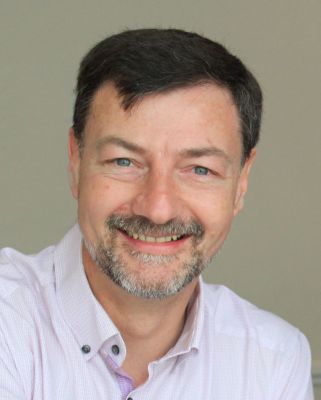Department of Physics, University of Warwick, Coventry, CV4 7AL, UK
Short CV: After an undergraduate degree in Physics, I took a PhD in the crystallography of interfaces at the University of Liverpool focusing on epitaxial layers and semiconductors, graduating in 1991. After several years as a postdoctoral research assistant specialising in transmission electron microscopy, both in the USA and UK (Ohio State University and Liverpool once more) I moved to industry to work in the research centre of GEC-Marconi, mainly working on electron microscopy of semiconductor materials and functional ceramics. In the late 1990s the company focused almost exclusively on III-V optoelectronic devices means utilising compounds formed between elements of group III and group V of the periodic table, and then went through a series of changes, being sold and taking over Nortel optical components, finishing as a III-V fabrication facility. I left in 2007 to become a research assistant once more, in the Department of Metallurgy and Materials at the University of Cambridge, before finding a place in the Department of Physics at the University of Warwick in 2008. Since then I have developed my research interests in electron diffraction, functional ceramics and semiconductor materials.
Lecture 17: Richard Beanland
Exploring dynamical scattering using 'digital' large-angle convergent beam electron diffraction (D-LACBED) patterns.
Richard Beanland
Department of Physics, University of Warwick, Coventry, CV4 7AL, UK
‘Digital’ electron diffraction – data reconstructed from several hundred convergent beam electron diffraction (CBED) patterns – overcomes the restriction on incident beam convergence angle imposed by the very small Bragg angles that are common in high energy electron scattering. The resulting data shows the beauty and complexity of multiple scattering, particularly when the beam is incident down a low-index crystallographic axis. In these D-LACBED patterns, the crystallographic phase is encoded by interference as the electron wave propagates through the specimen, giving complicated patterns of bright and dark fringes. Comparison of experimental data with simulated patterns, calculated using the Bloch-wave code felix, allows quantification of atomic coordinates to sub-picometre precision as well as measurements of thermal vibration parameters, occupancy etc. The remaining discrepancies between simulation and experiment are probably a result of the independent atom model used in simulations. We also explore dynamical effects in continuous-rotation electron diffraction (cRED) data, commonly used for structure solution, by repurposing felix to simulate diffracted intensities as the sample rotates. As shown by the Palatinus group, there is a significant improvement in fit when dynamical intensities are used rather than the simplistic kinematical model. Using silicon as a model material, we reassess the approach needed in structure solution methods to take account of dynamical effects.


